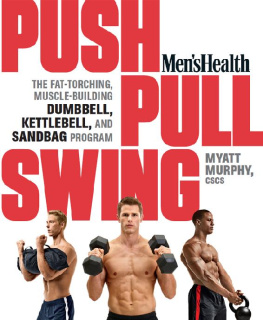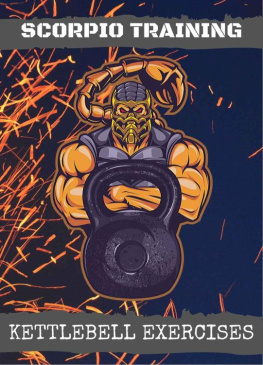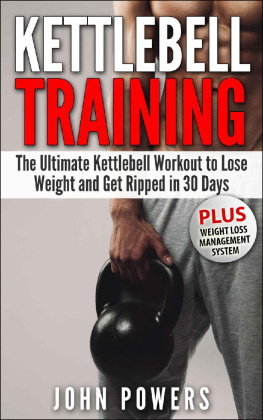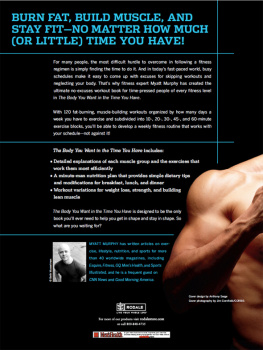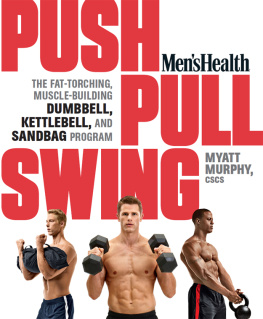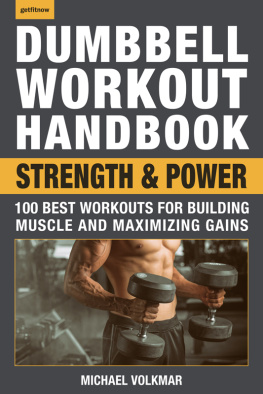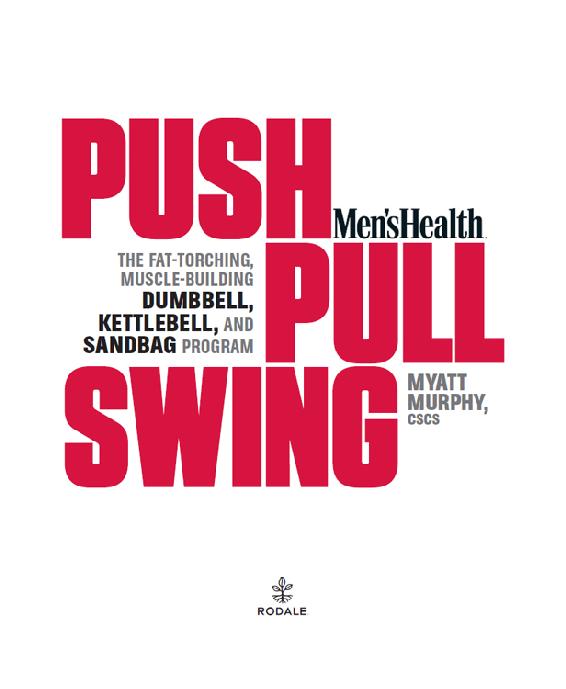
To K and B .
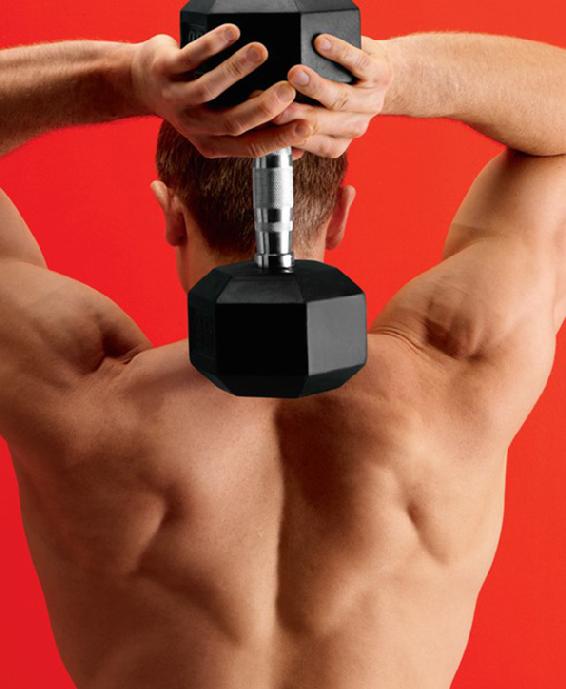
CONTENTS
The Philosophy of Movement over Muscle
The Holy Trinity of Total-Body Transformation
What You Need to Succeed
The Anatomy of Push, Pull, and Swing
Six Steps for Eating Right While Training for a Leaner, More Muscular Body
Push, Pull, and Swing with the Muscle-Building King
Push, Pull, Swing with This No-Nonsense Work Capacity Tool
Push, Pull, Swing for Real-World Strength
1-Week Tryouts to Learn the Key Moves and Sample Each Piece of Gear
Choose a Blend of Movements for Total-Body Fitness and Optimum Fat Burning
11 Top Trainers Programs for Dumbbells, Kettlebells, and Sandbags
ACKNOWLEDGMENTS
Push, Pull, Swing is the fifth book Ive had the pleasure of writing for Rodale Inc. Mens Health The Body You Want in the Time You Have, The Mens Health Gym Bible, Mens Health Ultimate Dumbbell Guide , and Testosterone Transformation being the other four. This is the second book that has allowed me to work with Editor Jeff Csatari, my colleague from the early days of Mens Health magazine and one of the hardest-working editors I know.
My sincerest thanks go out to every trainer who I consulted during my research, including Tony Ambler-Wright, Lisa Balash, Missy Beaver, Bradley Borne, David Buer, Fabio Comano, Aaron Drogoszewsik, Mike Fantigrassi, Rob Gibson, Joseph Giangrasso, Tony Gonzalez, Steve Hess, Chip Huss, Lorna Kleidman, Annie Malaythong, Ronald Merryman, Erin McGill, Marty Miller, Gabriel Rangel, Prentiss Rhodes, Eric Salvador, Ben Shear, Kyle Stull, Brian Sutton, and David Van Daff. Even though it pained me not to be able to include every one of your workouts due to lack of space, your efforts and interest are greatly appreciated.
A special thanks to the other contributors who made this book possible: Mitch Mandel; Julia Merz; Joanna Williams, art director; Andrew Speer, an owner of Soho Strength Lab who modeled for the exercise photographs in the book; Nikki Weber; Lynn Greenspan; Karen and Courtney Lewis; Troy Schnyder; Stacy Foley; Emily Groff, proofreader (for giving everything her never-miss once-over); Hope Clarke, senior project editor; and the entire Rodale Books publishing team.
Finally, if you learn anything from Push, Pull, Swing , you have my dada hardcore marineto thank. He started me on the path to getting in shape so that one day I might do the same for others. Another one down, Dad.
Myatt Murphy

PART ONE
THE PHILOSOPHY

CHAPTER
PUSH, PULL, SWING
THE PHILOSOPHY OF MOVEMENT OVER MUSCLE
P lease step away from the Smith Machine for a moment and listen to an ancient tale from the Indian subcontinent. Although many different versions of the story exist, the basic gist is this: Several blind men are summoned before the king of a vast land. They are brought into a large room, and inside this room is an elephant. The king asks the blind men to describe the beast, so each man touches a single part of the animals body. One touches the leg and says, It is like a pillar. Another grabs hold of an ear and describes it as a fan. A third strokes its tusk and says its like a plowshare.
Each man was sure he was correct. And he was. But when asked to summarize their findings, they could not agree on how to describe the elephant in its entirety. So stubbornly did they hold to their individual assessments that they argued until they came to blows, to the delight of the king.
The story has many meanings. Most interpret it as a parable to discourage dogma, comparing the blind men to preachers and scholars who are blind to new thinking and hold on to old ways.
In one version of the parable, the Buddha ends the bickering with this verse:
O how they cling and wrangle ,
some who claim
For preacher and monk
the honored name!
For, quarreling, each to his view they cling .
Such folk see only one side of a thing .
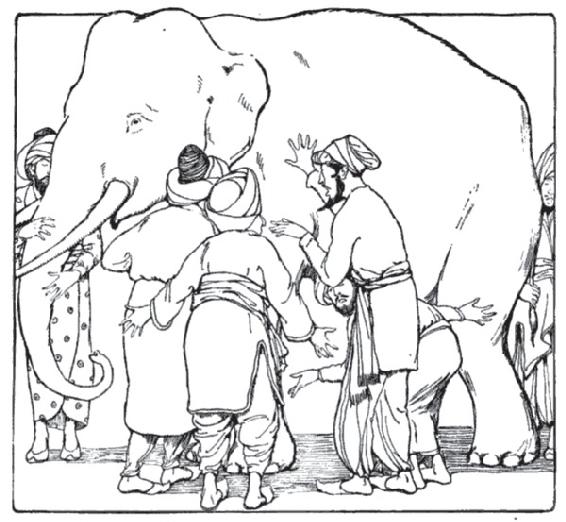
For strength and athleticism, work the entire elephant.
Youre probably wondering what this has to do with strength training. After all, its rare to find blind men feeling up elephants in a gym. What you do find in gyms, however, is a lot of people who act as stubbornly as those old blind men: They train one way, the same familiar way, perhaps the way they learned 10 years ago from a bodybuilding magazine or a personal trainer. They focus on the vanity muscles, or one style of exercise, or a favorite lift, and as a result they fail to see the bigger picture.
In weight training, there are hundreds of different exercises but really just three basic movements: pushing (which includes squatting), pulling, and swinging. Yet even with so few critical moves, were always surprised to find that most guys focus primarily on the pushing exercises, ignoring the other two. Take notice of the lifts most guys are doing at any given time in the weight room. Consider your own workout. Overloading your workout with pushing exercises leads to unbalanced training and lopsided bodies, and it cheats you out of moves that work your whole self more effectively through a full range of motion.
Hey, were men. Were a little vain. So we curl for bigger biceps, bench for a massive chest, crunch for abs of steel, and squat for powerful legs. But like those blind dudes who each focused on just one part of the elephant, most men ignore the other important body parts during training. As a consequence, their results suffer.
Training single body parts is a really inefficient way to exercise unless you are a bodybuilder preparing for a physique contest. If you want to boost your metabolic rate, burn fat all over your body, and build functional strength, you need to take a grander view during exercise. You need to take in the whole elephant.
Think about strength in practical terms: In real life, your body rarely moves just one muscle group at a time. That would be unnatural. But thats what it does when you perform a Biceps Curl. Ask yourself this: When in real life do you push away from your chest as if youre doing a bench press? Maybe when you find yourself lying on the kitchen floor with a refrigerator on your chest. But thats about it. If you work your muscles in a limited range of motion, you create imbalances in your physique, which in turn can cause posture problems and encourage injury. And you ignore all of those tiny muscles that help move the bigger ones and support your frame.
In real life, your body moves not like the hinge on a door but in three planes of motion, the way a basketball player, mixed martial arts fighter, or regular human being tripping over a curb does, with twists and turns and arms flailing. When you run, swim, jump, skip, tackle, tumble, or dance, you move the whole elephant, not just the trunk. So why train with weights in such a limited way? Youre not a fixed joint on a robotic arm in an assembly plant. Youre fluid, and so you should train with weights that way. You need to Push, Pull, Swing. If in addition to your favorite pushing exercises you did a mix of good pulling and swinging movements, you would create well-rounded, functional strength for the way you use your body every day. Whats more, youd build a roaring metabolic fire within your body by activating so many more muscles, from tiny to big.
Next page
